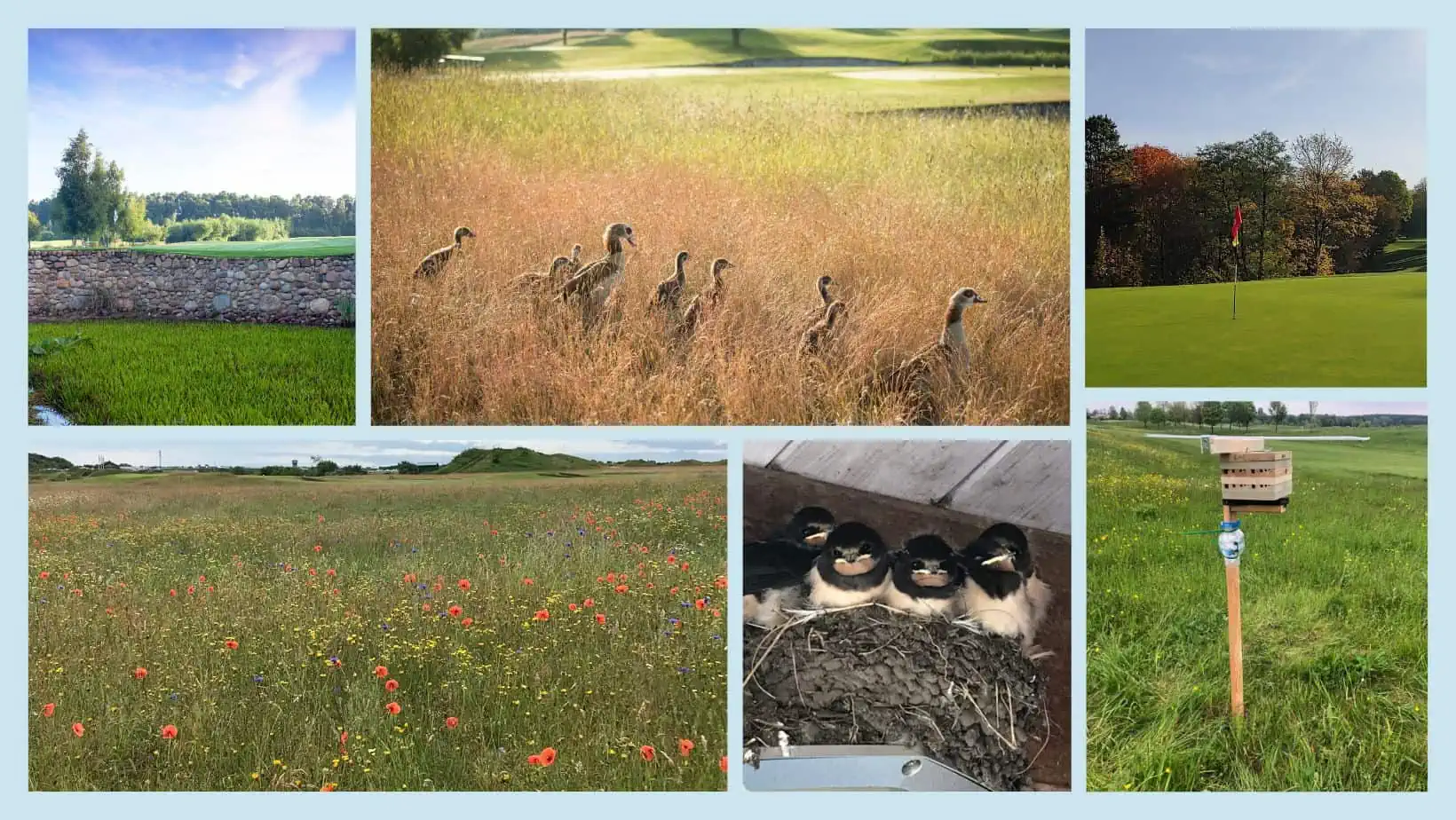GolfBiodivers: Solutions sought against the biodiversity crisis
The first insect hotels are in place, the plots have been surveyed – for the GolfBiodivers project, the Wulfsmühle and Kitzeberg golf courses as well as the Marine Golf Club on Sylt are in the starting blocks and are looking forward to the next few months of cooperation with Kiel University and Prof. Dr. Tim Diekötter’s team.
The registration for the large German biodiversity study, which started in the summer of 2023, was a matter of course for the three clubs, which belong to the Golf Association Schleswig-Holstein. All three golf courses have been part of the DGV certification program Golf & Nature for several years, and all three are involved in nature and environmental protection projects. “We do a lot in this area anyway, so we’re very excited to see what input we get now,” sums up Roland Grüger from Marine Golf Club on Sylt. He also hopes the collaboration will provide new insights into managing species-rich meadows. “We have 2021 an area of about 5,000 square meters was deeply turned over. The sowing of landscape flowers has brought a good success. As part of biodiversity studies, we want to find out what additional measures can lead to a larger insect population. The growing number of breeding swallows could be a good indication that we’re on the right track.”
Compensatory areas increase biodiversity
At Kitzeberg Golf Club and at the Gut Wulfsmühle golf course, people are also excited about the cooperation. “After all, we are experiencing a decline in biodiversity throughout our environment. That’s why the areas on the golf course that lie outside the pure playing holes are so important to us,” notes Christina Druve as managing director. The golf course, which is located in Hamburg’s extended belt, offers a total of around 35 hectares of compensation area and is considered a showcase model, especially with the renaturalized area of the Pinnau River. With a biotope network of around ten hectares on the golf course, consisting primarily of lakes, ponds and streams, the GC Wulfsmühle scores particularly well with birds such as oystercatchers, gray Canada, Grand and Nile geese, as well as seagulls and gray herons, which have their habitat here.
At the GC Kitzeberg, on the other hand, less water areas than trees, hedges and smaller meadow areas play a role. Orchards are also an important habitat for birds and insects in some parts of the site. “For us, participating in the GolfBiodivers project is also about documenting that golf facilities are part of the solution when it comes to the biodiversity crisis,” notes Simone Spindler, who manages the facility’s club secretariat.
Within GolfBiodivers, Kiel University has the leading position in project part 1, the landscape ecological analysis. For the three golf courses, this means that at the beginning of this sub-project, the landscape and the existing habitats on two approximately 50-hectare sites will be digitized by aerial photograph and then analysed. One plot is located on the golf course, the other in the directly adjacent landscape. Ten to 20 different types of habitat, known in science as habitat, are evaluated.
The scientists then record the baseline situation on both properties and establish the inventory with respect to some key species. Grasshoppers, butterflies, small birds, bats, wild bees and other flower visitors are recorded. For this purpose, landing nets have already been hung up on all three golf courses and special insect hotels have been set up. Birds and grasshoppers have since been detected via acoustic signals. The results will then be evaluated and recorded in the fall.






 England Golf
England Golf 